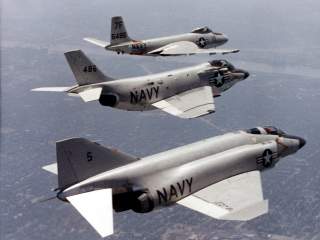America's F-4 Phantom: Taking On the World's Best Fighters (At 60 Years Old)
The Phantom’s fundamental flaws were corrected by 1970 — while more recently, Phantoms have had their avionics and ordnance upgraded to modern standards.
The Israelis pioneered the art of Phantom upgrades in the 1980s with the Phantom 2000 Kurnass, or “Sledgehammer.” Though retired from Israeli service in 2004, Israeli firms went on to upgrade Greece’s 41 Peace Icarus Phantoms, equipping them with ANPG-65 pulse-Doppler radars and the ability to fire AMRAAM missiles.
Israeli upgrades contributed to the Turkish air force’s Terminator 2020, which has additional wing strakes for improved maneuverability.
The 2020s have had 20 kilometers of wiring replaced for a net loss of 1,600 pounds in weight. The Turkish versions also feature a diverse array of modern sensors and electronics. Like other modern F-4s, they can deploy advanced ordnance such as Paveway bombs, HARM anti-radar missiles and 3,000-pound Popeye missiles with a range of 48 miles.
The Terminators are primarily ground-attack planes … with some notoriety. They’ve bombed Kurdish PKK fighters in Turkey and Iraq in 2015 and 2016. An RF-4 reconnaissance plane was shot down over Syria in 2012, and three F-4s crashed in 2015 — earning them the appellation “Flying Coffins” in the Turkish media.
The Iranian air force in 2009 claimed to operate 76 F-4Ds and Es, and six RF-4s. Tehran has reportedly modified the planes to fire Russian or Chinese air-to-ground and anti-shipping missiles. They still rely on AIM-7 Sparrows acquired second hand.
Likewise, Iran relies on smuggled and improvised spare parts for its F-4s, just like its F-14 Tomcats.
Iranian Phantoms bombed Islamic State targets in Iraq’s Diyala province in December 2014, and they continue to play cat and mouse games with U.S. patrols and drones over the Persian Gulf.
But are souped-up F-4s really equal to fourth-generation fighters? None of these 21st century Phantoms have flown in air-to-air combat — but F-4s Phantoms have engaged in non-lethal dogfights with Greek F-16s on several occasions.
They also tangled with Chinese Su-27s in a 2010 exercise — and according to some reports on the internet won zero to eight.
And if you compare videos of F-4s with wing slats making a tight, 180 degree turn (see 4:25 above) compared to F-15s doing the same maneuver, you will note that they both average seven to eight seconds to complete the turn, even though the latter is purportedly more maneuverable.
This doesn’t prove upgraded F-4s are superior to later designs, of course — but it does show they capable of pulling their considerable weight when compared with fourth-generation fighters.
The Phantom has proven both versatile and adaptable over time. Few of those present for its first flight in 1958 could have imagined that it would remain in frontline service nearly 60 years later.
Rudolph Emilio Torrini contributed to this article.
This piece first appeared in WarIsBoring here.

